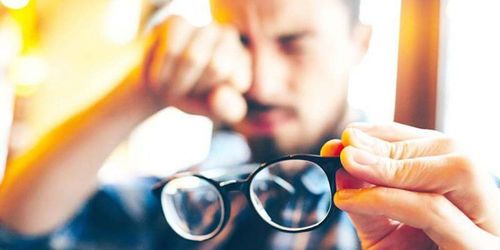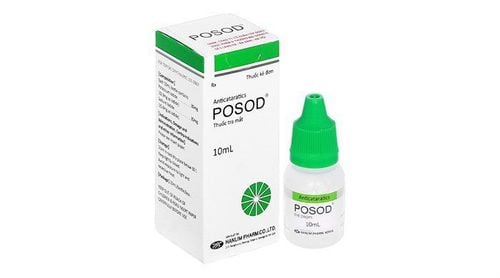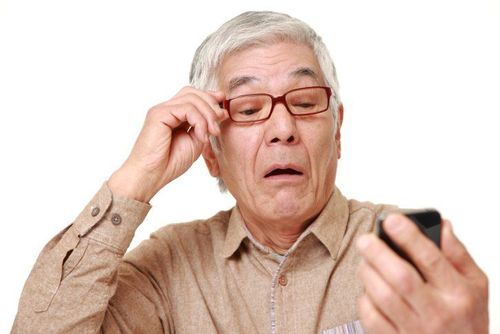This is an automatically translated article.
The article was professionally consulted by Specialist Doctor I Nguyen Thi Bich Nhi - Ophthalmologist - General Surgery Department - Vinmec Nha Trang International General Hospital. The doctor has 10 years of experience in the field of ophthalmology.Myopia is a refractive error of the eye that causes the eye to see clearly only near objects and fades when looking at distant objects. The image of the object will focus in front of the retina instead of on the retina like a normal eye. The degree of myopia is measured by the number of cases, so what is the calculation of myopia?
1. What is nearsightedness?
Myopia degree is a parameter used to indicate the degree of severe or mild myopia, people often rely on myopia to give appropriate measures to improve vision. When it comes to myopia, people often refer to the term diopter. So what is going to cover?Diop is a unit of measurement for the curvature of the lens used to help the eye see things normally. Larger Diop units indicate more severe myopia and increased lens thickness. Myopia is denoted by D, read as walking - facing.
The symbol written on the surface of the lens is –D means nearsightedness (if the symbol is a “+” sign, it means farsightedness). For example -1D, -2D, -3D is equivalent to myopia 1 degree, 2 degrees and myopia 3 degrees. So how many degrees is close to 1.5 diop? Close to 1.5 diop is understood as close to 1.5 degrees.

Số hiển thị trên diop tương đương với độ cận
2. Classification of myopia according to disease type
2.1. Simple nearsightedness
Visual acuity decreases when looking at a distance but when seeing near is still normal, this is nearsightedness. Myopia is caused by an asymmetry between the relative power and the length of the anterior posterior axis of the eyeball. The anterior posterior axis of the eyeball will be longer than the relational power causing myopia.2.2. False myopia
Patients who see distant objects are blurred after a long time of work or students lose their eyesight during exam preparation, when they try to wear glasses, they see objects clearly. However, this is most likely due to overwork of the eyes leading to temporary blurriness. If you do not give your eyes a reasonable and moderate rest, it will be possible to turn false myopia into true myopia.
Cận thị giả có thể biến thành cận thị thật nếu không được điều trị sớm
2.3. Degenerative myopia
Myopia is accompanied by degeneration in the posterior part of the eyeball, occurs early in the child's school life and runs in families. This type of myopia develops very quickly, causing rapid vision loss, which can cause glaucoma or retinal detachment, even leading to blindness.2.4. Myopia at night
This type of myopia is quite special because it only occurs at night, when the light is low, the eyes cannot distinguish clearly. In dimly lit environments, the eye has no place to stimulate accommodation, so there's almost no contrast to the eye.2.5. Secondary myopia
Myopia is caused by certain medications, blood sugar fluctuations in patients with diabetes, cataracts, or some other disorder.Myopia classification according to myopia degree:
Mild myopia: < -3.00D Moderate myopia: -3.00 to -6.00D Severe myopia: > -6.00D Myopia classification according to age of onset
Congenital myopia birth: present at birth Myopia appears when children: from 6 to <20 years old Adult myopia: 20-40 years old) Late adult myopia: >40 years old
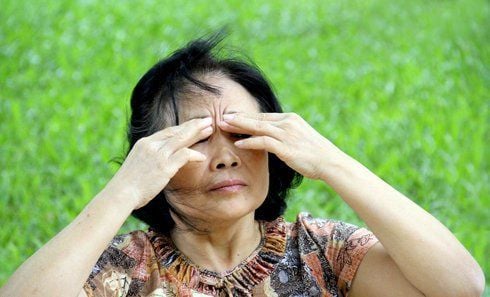
Bệnh tiểu đường có thể là nguyên nhân gây ra cận thị
3. How to calculate myopia of the eye
The most common way to measure myopia of the eye is to use a measuring table. The person to be measured will sit in front of the board, then one person will point at the board, the person to be measured will cover one eye (taking turns on both sides) and then read the characters on the board at the request of the instructor. There are many types of eye acuity tables, depending on the subject that applies the calculation of myopia with different measurement tables.Landolt open-circle visual acuity table. Armaignac's E-vision chart. Snellen alphabetical vision chart with letters: L F D O I E. Visual vision chart with objects/animals for children or for illiterate people. The calculation of myopia will be based on the near point and far point of each person. The image will be within the limit of 2 near and far points, the image in that range will be clearly seen by the eye. The far point is understood as the farthest point at which the naked eye (eyes without glasses) can clearly see an object. Normal people have a far point of infinity, so wearing glasses is only for the purpose of correcting the far point of a nearsighted person away from infinity.
When the far point is 2m, it will be equivalent to -1D. The far point of 1m will be equivalent to near -1.5D. When the far point is 50cm, it will correspond to the myopia of the eye is -2D... From there, the doctors will make conclusions and direct the remedy for the patient's current eye condition.
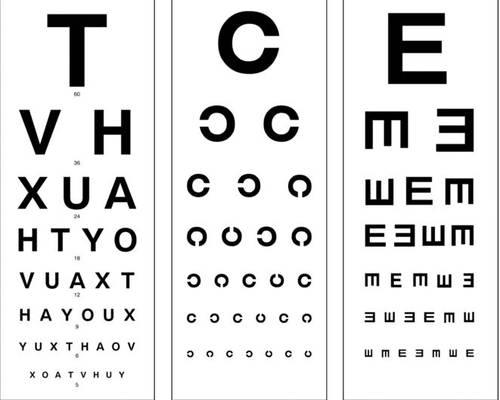
Bảng đo thị lực là dụng cụ đo độ cận thông dụng nhất
4. Measuring myopia by machine
Step 1: Measure with an electronic device Visual acuity measurement with an electronic device is used to assess the condition of the eye. In that result there are some common symbols:R (Right) or OD is the result of measuring the visual acuity of the right eye. L (Left) or OS is the result of the vision measurement of the left eye. S (SPH/Sphere/Bridge) is the number of degrees of the lens, followed by the symbol “-” for nearsightedness and the symbol “+” for farsightedness. In order to get the correct myopia, this step must be performed many times, taking the AVG number (average measurement) as a basis for determining myopia. S.E is the recommended number of glasses to use. PD is the distance between the two pupils of the two eyes, the unit is millimeters (mm). With step 1, it will determine whether or not I am nearsighted, then need to take the next step to get the most accurate diagnosis.
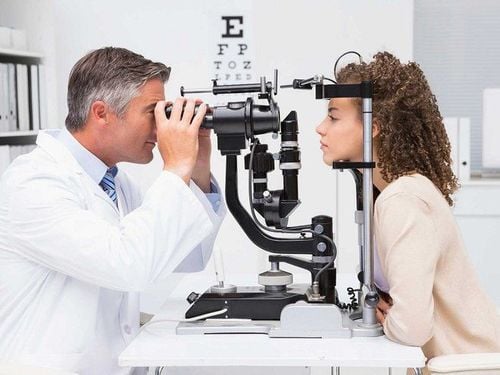
Đo thị lực bằng máy điện tử giúp xác định bạn bị cận hay không?
5. How to measure myopia of the eye at home
Prepare: vision board, 1 ruler in centimeters, 1 white string 105-110cm long, 2 pens with different ink colors, 1 cardboard with any unsigned lettering (Times New Roman font, size size) 14, bold) and must be taken by 2 people.Instruct the person being measured to cover his eyes with one hand, with the other hand to hold one end of the wire and place it under the eye to be measured, at a level with the nose and 1cm away from the nose. The support person uses one hand to stretch the rope, the other hand holds the paperboard to move from close to eye to far slowly on the rope to determine the near and far point of the human eye to be measured.
When pulling the paper cover slowly away, ask the person to be measured to read the words on the paper, then determine the furthest distance that he or she can clearly see, and mark again. Let the person to be measured relax the eye for 3 minutes and then repeat for the other eye. How to calculate myopia:
Take a measure of the distance from the end of the rope to the mark of the two eyes in centimeters. Divide 100 by the measured distance to get the result of myopia of the eye. Myopia = 100/distance (cm). For example: The clear viewing distance is 40 cm, then myopia = 100/40 = 2.5 degrees. Note that this measurement should be taken in a well-lit place, preferably during the day. According to these, relative nearsightedness can be measured. However, to be more accurate, people with myopia should go to the hospital to be checked by a specialist to check and measure vision accurately and intervene early to overcome myopia effectively.
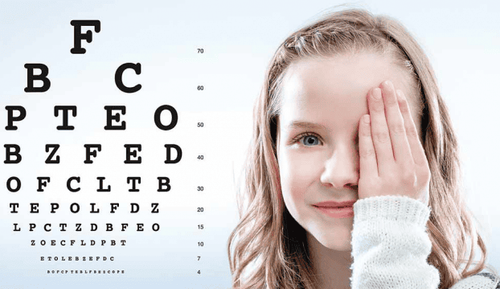
Ba mẹ có thể hướng dẫn trẻ đo độ cận thị của mắt ngay tại nhà
Eye specialist at Vinmec has comprehensive vision and eye health care functions for children, adults and the elderly including: refractive error check, optometry, laser treatment and surgery. In addition, the department also has the task of coordinating with other clinical departments in the treatment of pathological complications and eye injuries caused by accidents. On the other hand, the team of Ophthalmologists here are experienced doctors who have performed many types of surgery from routine to difficult surgery, especially techniques that require aesthetics. With enthusiasm and love for the profession, the team of doctors working at Vinmec always gives customers the best services with the highest service quality.
Please dial HOTLINE for more information or register for an appointment HERE. Download MyVinmec app to make appointments faster and to manage your bookings easily.




